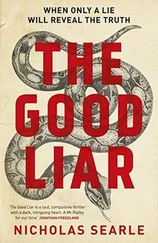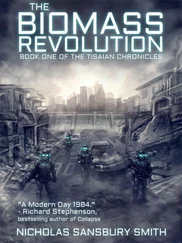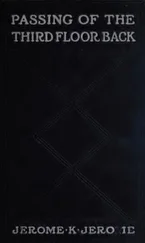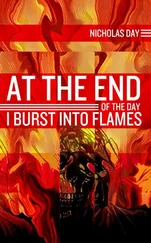Laing pauses for a second, as if he’s holding the entire movie in his head and the image is projected onto the side of an enormous soap bubble there in the motel room with us that might burst and disappear forever at any moment. I suddenly have no desire to be in the room with him. I’m overcome with the feeling (a feeling that made only a little sense then and only a little sense more now) that we are standing on the sea floor, and that the blue velvet chair, the bed, the table, were all sunken objects, somehow preserved by the icy water that Laing and I, as if by magic, could breathe under. And if Laing hadn’t started up again about Destroyer I may very well have walked out.
“The next scene looks radically changed from what has come before as if a different director or cinematographer has taken over. It’s the familiar three bikers. They are in the same diner as earlier and yet everything is a little larger, cleaner, brighter. But the scene doesn’t begin that way. It begins in darkness. You can hear the sounds of the diner: scraps of conversation, the clattering of dishes, the cash register, maybe the scuffling of shoes on the floor. The light comes up slowly as if traveling through a frozen universe. After a few minutes the dim shapes assume their familiar forms. The bikers sit at the same table. But instead of leather and denim they wear uniforms of some sort, navy blue uniforms. This time the audio is clear. In the background, the window has a soft red smudge mark where the bird hit.
“‘We should tell them that he’s still following us,’ the woman says, stirring her coffee. She pauses. ‘And that Mr. Cyclone or Mr. Destroyer or whatever the girl calls him came in and that he’s the one who took that money.’
“‘How can we?’ the tattooed biker asks. ‘Steadman already suspects. The girl’s on record as saying she’s being watched all the time, man. In every transcript I’ve fuckin’ read the girl refers to Mr. Cyclone or Mr. Destroyer as It . Not as him . What she says is: I have a feeling It’d destroy us if It could. If only to get at her . It, man.
“‘I wonder if It knows we’re talking about it,’ the woman says, with venom, ‘and what if It is a beast and not a man, or a beast that was a man?’
“The scene cuts with no preparation or warning or musical cues to the Datsun as it pulls up beside another car, a black one, that’s stopped on the side of a desert road. It’s a crane shot, the camera stationary in the air as if attached to an invisible telephone pole. For a few minutes nothing seems to happen, at least nothing that can be seen. We hear the wind moving sand across the hot road and the watery waves of heat rippling off the tops of the cars seems CGI’d but that’s impossible in a film from 1969. Finally, the limping man with the black cowboy hat gets out of the Datsun and walks slowly around to the back of the car. He keys open the trunk and pulls something out, something that looks like a heavy iron rod. He holds it to his side and walks around the black car, looking in its windows. If there’s someone or something in there we can’t see it, not from this canted angle. When he taps on the passenger side window with the iron bar we hear it from within the car itself, as well as the soft sound of breathing. It’s as if there’s a split: we’re now hearing things from the inside of the car but seeing things from outside. The Datsun driver taps the window harder and there’s a shuffling noise from within the car, as if someone is searching for something in the glove box. Then suddenly he takes the bar in two hands, raises it over his head, and brings it down against the car window once, then does it again. He drops the bar and reaches in through the shattered window and there are screams, either from him or from whomever’s in the car, and then suddenly it’s clear that he’s trying to pull away, that whatever’s in the black car has got a hold of him and is trying to pull him in, and he’s struggling to get free. The screams are louder now, high-pitched and terrible, and his body is half in the car, his legs kicking in the air, the camera just holding the shot like a one-eyed torturer, watching as, finally, the man goes limp, half his body in the black car and half out.
“The next scene is back at the diner,” Laing continues. His demeanor, sitting there at that table with his large hands folded in front of him, suggests that he doesn’t show the slightest interest in me. And yet I feel that he’s observing me with intensity even as he pretends to be lost in the movies he describes.
“A red line appears in the center of the screen, from top to bottom. It’s about the width of a pencil at first. It vibrates ever so slightly as if etched on the film itself. The line slowly widens, splitting the screen in two. And if that isn’t remarkable enough, this: the characters — now divided by the red line — try to reach each other but can’t. The line is real for them. When the woman reaches across the table she jerks her hand back when it approaches the red line. She shakes her fingers to cool them. She tries again, and the same thing happens.
“The red line widens. It takes up the middle third of the screen. It bubbles slowly like lava. Shimmering waves of heat push out toward the edges of the screen. The characters — the two biker-men on the left and the woman on the right — back away from the center. They splay their hands in front of their faces, palms out, to shield themselves from the heat. Eventually they retreat off the screen, to the left and to the right. Presumably into the implied story space of the film itself.
“As the line expands it destroys everything. The screen itself is eradicated and replaced with molten red. It leaks out of the frame. It hisses when it hits the theater floor. Laura and I want to leave but it’s hard not to watch. It’s hard to think. Something else is being destroyed here. Not just theater seats and empty popcorn buckets.
“Something more.
“We want something more.
“We want something more to be destroyed.”
*
Laing is not so good at transitions. As soon as he finishes describing Destroyer he starts in on another film, Black Star . At the time I chalked this up to his age, but even then I knew there was something else at work, and that Laing’s rough transitions between films — his inability or unwillingness to provide connective tissue — was really the equivalent of the rough jump cuts in the films he loved, the films he loved so much he had to destroy, and that my own desire to fill the void of her loss (a void that had nonetheless given my life its shape) was the very reason I had come out here to find Laing as if somehow he could replace the blank and final fact of Emily’s death with something else, some mystery, the mystery that her life was or would have been had she lived. The earth is stuffed with the dead. This I understand. In a perverse way, I suppose, I had refused to be sentimental about the death of my daughter. I had been deep into Charlotte Brontë’s novel Villette during that time, and there was a line that was so powerful that for many years it extinguished all other belief: “A new creed became mine — a belief in happiness.” Lucy Snowe writes this as she is falling in love with someone she knows she cannot love and I can say this now, after exiting the dangerous orbit of Laing: I had not loved my daughter fully in order to protect myself from what I feared most: her loss.
“ Black Star ,” Laing says, “was simply too close to the truth. It had to be destroyed. The film was shot and is set in the ’80s but it used 16 mm Eastman Kodak stock from the ’40s. While the magenta and yellow dyes that form the image fade in other stocks, the Kodak stock from that era is persistent, so the film has a weird vibrancy to it, so strong and intentional, if that’s the right word, that it’s almost like it’s the film that’s watching you, rather than the other way around.” There’s a sadness or a false sadness as he says this, a lilt in his voice, and while at the time it seemed to be rehearsed I’ve come now to believe that describing the movies to me involved a genuine loss on Laing’s part. I’d go so far as to say that it was a slow method of suicide.
Читать дальше












![Nicholas Timmins - The Five Giants [New Edition] - A Biography of the Welfare State](/books/701739/nicholas-timmins-the-five-giants-new-edition-a-thumb.webp)